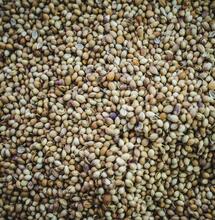Researchers take a step toward Standardised Dosage of Cannabis

Canadian investigators have created a special technique to allow for standardised dosing of cannabis across various methods of consumption. Researchers from UBC Okanagan have developed a Cannabis Equivalence Index (CEI).
This study, published in the Journal of Psychoactive Drugs symbolises an influential stage in designating dosing policies for cannabis equivalent to those used for alcohol.
The transition toward wider cannabis legislation has encouraged researchers and public health professionals to call for a standardised dosage of cannabis to support regulation, substance use policies, data compilation, and further research.
Standardised dosage is useful for conveying low-risk suggestions and dose-related effects, as well as to allow for self-monitoring. To create the ICE, the study looked at data from over 1,300 participants aged 18 to 93 with a history of using cannabis.
The study participants, who had differing experiences with cannabis, including the reasons they used it, rated low, medium, and high doses over seven different consumption methods. Based on these outcomes, the ICE suggested equivalencies for what they classed as “low-dose” cannabis use.
“Different methods of cannabis consumption can produce different psychoactive effects, making it difficult to establish comparable doses across products,” Dr Michelle St. Pierre, co-author of the study.
“The ICE addresses this challenge by providing user-informed equivalencies based on psychoactive effects, offering a practical framework to help people make informed decisions and better manage their cannabis use.”
The sample found that two puffs from a joint, pipe, or vaporiser are comparable to 5 mg of THC in an edible, 1-quarter of a concentrate, or a single bong hit.
These approaches are founded on data gathered from those with low cannabis toleration, guaranteeing that safety and accessibility are a focus, particularly for new or irregular users.
“Meaningful standardization of cannabis product units like that achieved with alcohol is a valuable step toward establishing standard doses across different cannabis administration modalities.”
“By creating practical, user-centred guidelines, ICE can support harm reduction, public health initiatives, and consumer education while improving coherence between research and policy.” -Co-author Dr Zach Walsh of the UBCO Department of Psychology.
More From Soft Secrets:
What Are Anti THC Saliva Sprays?
Growing Cannabis Could Boost British Farming, says MP
Germany, The Perfect Market for USA Cannabis Business Expansion








